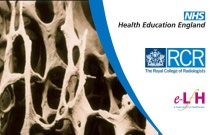Anaesthesia and Myasthenia Gravis
Steven Williams and Jason Easby
0.50 Hours
This session provides an outline of the pathophysiology and treatment of myasthenia gravis and discusses the profound implications that myasthenia gravis has for anaesthesia. There is also discussion of the pre-operative assessment, intra-operative management and post-operative care of patients with myasthenia gravis.
Anaesthetic Implications of Obesity
Cat Gibson
0.50 Hours
This session provides a definition of obesity, describes the effect of obesity on the various organ systems, highlights its association with other co-morbidities and discusses the implications of obesity for anaesthesia.
Postoperative Analgesia: Basic Principles and Analgesic Ladder
Edward Burdett and Yogen Amin
0.50 Hours
This session will describe the importance of postoperative analgesia, with emphasis on multimodal analgesia, together with some commonly encountered techniques. The analgesic ladder will be described.
Anaesthesia for a Child With Cerebral Palsy
Graham Bell
0.50 Hours
This session will outline the principles of anaesthesia for children with cerebral palsy presenting for elective surgery. It will cover how the severity of cerebral palsy directly affects the techniques chosen
AC and BC Audiometry
Kirpa Chandan
0.50 Hours
This session details how sound travels via both air and bone conduction. It details the full procedures for carrying out unmasked air and bone conduction audiometry.
Preparing for Audit
The National Institute for Health and Care Excellence (NICE)
0.25 Hours
This session is the first of a two part module about how best to carry out a clinical audit. This first session looks specifically at preparing an audit, using the topic of smoking cessation as an example.
Parental Relationships Part 2: Practical Methods of Assessment and Support
Jan Mitcheson
0.25 Hours
This session is designed to help you recognise and respond appropriately to relationship stress between parents. It provides you with some simple tools that will help you to explore with parents their understanding of what is happening in their relationship, and to look at what they might be able to do to strengthen their relati....
Radiofrequency Devices
Sarah Pape
0.50 Hours
This session describes the characteristics and applications of radiofrequency radiation and explores the hazards associated with the use of radiofrequency devices in a clinical setting.
Beam and Non-Beam Hazards of Lasers and Other Optical Radiation Devices
Sarah Pape
0.75 Hours
This session explores the range of hazards associated with the use of lasers, IPL and other optical radiation devices.
Paediatric ERGs and VEPs
Dorothy Thompson
0.50 Hours
This session covers how visual electrophysiology can be applied in young children and how combining ERG/VEP findings contributes to diagnosis and monitoring in paediatric ophthalmology clinics.
Ocular Masses and Tumours
Hatem Riad Atta FRCSEd, FRCOphth, DO
0.50 Hours
This session covers the detection and diagnosis of common ocular mass lesions.
Proptosis and Orbital Masses
Roxanna Gunny
1.00 Hours
This session describes common causes and most common malignant causes of proptosis in children, their typical clinical presentations and imaging features and which imaging features on computed tomography (CT) or magnetic resonance imaging (MRI) can help to distinguish them.
Catheter Studies - Disease Diagnosis - Radiology
Dorothy Keane and Yogesh Raja
0.50 Hours
This session looks at the procedures carried out during cardiac catheterisation including angiography, angioplasty, percutaneous coronary intervention (PCI) and intracoronary imaging.
Anatomy of the Carpal Bones (Adult) - Radiology
Claire Giles
0.50 Hours
This session will look at the anatomy of the carpal bones.
Anatomy of the Shoulder (Adult) - Radiology
Joanne Hargreaves
0.50 Hours
This session will look at the anatomy of the shoulder.
Anatomy of the Bones of the Thorax (Adult) - Radiology
Lisa Field
0.50 Hours
This session will look at the anatomy of the bones of the thorax.
Anatomy of the Thoracic Spine (Adult) - Radiology
Lisa Field
0.50 Hours
This session will look at the anatomy of the thoracic spine.
Anatomy of the Lumbar Spine (Adult) - Radiology
Kirsty Buckley and Alison Walker
0.50 Hours
This session will look at the anatomy of the lumber spine.
Epidemiology and the Impact of Pain
Sue Jenkins
This session explains the prevalence and impact of acute and chronic pain on both individuals and society as a whole. Important note - any drug doses mentioned in this session are for illustrative purposes only. It is your responsibility to refer to appropriate guidelines when treating patients, such as the British National F....
Ano-rectal STIs
John White
0.50 Hours
This session covers the specialist investigation and management of ano-rectal and enteric sexually-transmitted infections (STIs), including the selection of an appropriate range of tests. Appropriate surgical and medical referral criteria will also be covered.
Cultural Competence and Maternity Services
Katie De Freitas
0.50 Hours
This session looks at the importance of cultural competence in the context of maternity care and aims to help health professionals support and meet the needs of a changing population.
Radiological Assessment of Aggressive Paediatric Bone Lesions
Sajid Butt
0.50 Hours
This session describes the imaging findings of aggressive bone lesions in the paediatric population. Common and important aggressive features will be reviewed along with the value of multimodality imaging in characterising these lesions.
Osteoporosis and Bone Densitometry
Clare Groves
0.50 Hours
This session describes the nature and causes of osteoporosis and how it is imaged, with special reference to dual x-ray absorptiometry (DEXA) as a diagnostic and management tool.
Crohn's Disease
Peter Rodgers
1.00 Hours
This session discusses Crohn’s disease with specific reference to small bowel involvement. It focuses on conventional imaging diagnosis and the many recent advances in this modality over recent years, through an understanding of the underlying pathological changes.
Abdominal Radiographs: Uses, Limitations, Techniques and Normal Anatomy
David Scullion
0.75 Hours
This session examines the uses and limitations of plain abdominal radiography, as well as the principles of abdominal plain film interpretation.
























